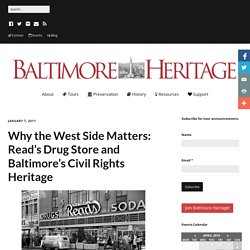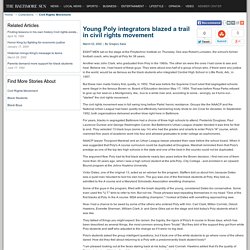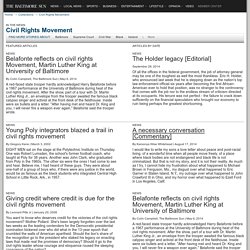

Online Resources - Civil Rights Movement in Maryland - Guides for the UMD community at University of Maryland Libraries. Document Analysis Worksheets. Document analysis is the first step in working with primary sources. Teach your students to think through primary source documents for contextual understanding and to extract information to make informed judgments.
Use these worksheets — for photos, written documents, artifacts, posters, maps, cartoons, videos, and sound recordings — to teach your students the process of document analysis. Follow this progression: The first few times you ask students to work with primary sources, and whenever you have not worked with primary sources recently, model careful document analysis using the worksheets. Point out that the steps are the same each time, for every type of primary source: Meet the document. Don’t stop with document analysis though. Materials created by the National Archives and Records Administration are in the public domain.
These worksheets were revised in February, 2017.
Gynn Oak protests. Primary source documents. Anne Healy Letter. Pictures of Protests. Local actions( Civil Rights Movement): Sit-ins, picket lines, bo. Why the West Side Matters: Read's Drug Store and Baltimore's Civil Rights Heritage - Baltimore Heritage. One of the West Side’s least well known but most important stories is the history of the former Read’s Drug Store at Howard and Lexington Streets and its landmark role in Baltimore’s civil rights movement.

Built in 1934 by Baltimore architects Smith & May, the press heralded this Art Deco structure as a local landmark from its beginning– a modern flagship store for the Read’s chain, continuing their 50-year presence at the bustling heart of the downtown retail district. Like many downtown commercial establishments in the early 1950s, the Read’s chain maintained a strict policy of racial segregation at their lunch counters. In 1955, a group of Morgan State students came together with the leadership of the recently organized Baltimore Committee on Racial Equality to organize a sit-in protest at the lunch counter of the Read’s Drug Store at Howard and Lexington Streets.
Read’s official: Please call your students off. They’re staging a showdown here in our Northwood store. For Students - Civil Rights - Themed Resources. Young Poly integrators blazed a trail in civil rights movement - tribunedigital-baltimoresun. March 03, 2002|By Gregory Kane EIGHT MEN sat on the stage at the Polytechnic Institute on Thursday.

One was Robert Lumsden, the school's former football coach, who taught at Poly for 38 years. Another was John Clark, who graduated from Poly in the 1960s. The other six were the ones I had come to see and hear. Believe me, I had heard of these guys. But these men made history first, quietly, in 1952. The civil rights movement was in full swing long before Parks' heroic resistance. For years, blacks in segregated Baltimore had a choice of three high schools to attend: Frederick Douglass, Paul Laurence Dunbar and George Washington Carver. NAACP lawyer Thurgood Marshall and an Urban League lawyer pleaded their case before the school board. The argument flew. Articles about Civil Rights Movement - tribunedigital-baltimoresun. By Leonard Pitts Jr | January 20, 2008 You want to know who deserves credit for the victories of the civil rights movement?

Mother Pollard. She's been largely forgotten over the last two weeks as the leading contenders for the Democratic presidential nomination bickered over who did what in the 13-year epoch that crumbled the walls of American apartheid. Should the lion's share of the recognition go to the president who staked his legacy on enacting laws that made real the promises of democracy?
Jackson, Lillie M. Carroll (1889-1975) Name: Jackson, Lillie M.

Carroll (1889-1975) Historical Note: Lillie M. Jackson was head of the Baltimore branch of the NAACP and a leading organizer of civil rights efforts in Maryland. Born Lillie Mae Carroll on May 25, 1889, in Baltimore, Maryland, Jackson received a public education in Baltimore City and graduated from the Colored High and Training School in 1908. Sources: Lillie M. Roland Park: one of America's first garden suburbs, and built for whites only.